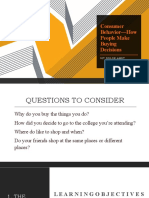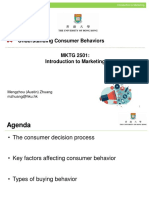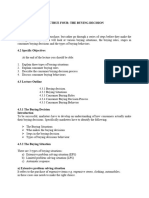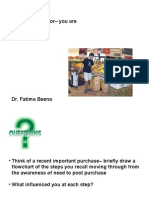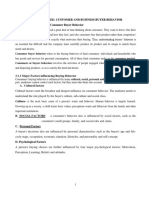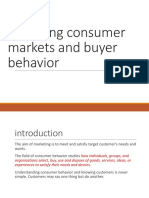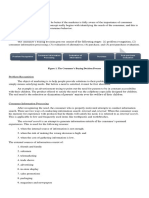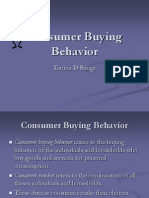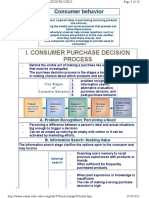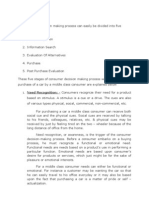0% found this document useful (0 votes)
156 views7 pagesNarrative Report - Buying Decision Process
The document discusses the five stages of the consumer buying decision process: problem recognition, information search, evaluation of alternatives, purchase decision, and post-purchase behavior. It provides details on each stage, including the factors that influence consumers' decisions and behaviors at different points in the process.
Uploaded by
SAYMON JASON GIGANTOCACopyright
© © All Rights Reserved
We take content rights seriously. If you suspect this is your content, claim it here.
Available Formats
Download as DOCX, PDF, TXT or read online on Scribd
0% found this document useful (0 votes)
156 views7 pagesNarrative Report - Buying Decision Process
The document discusses the five stages of the consumer buying decision process: problem recognition, information search, evaluation of alternatives, purchase decision, and post-purchase behavior. It provides details on each stage, including the factors that influence consumers' decisions and behaviors at different points in the process.
Uploaded by
SAYMON JASON GIGANTOCACopyright
© © All Rights Reserved
We take content rights seriously. If you suspect this is your content, claim it here.
Available Formats
Download as DOCX, PDF, TXT or read online on Scribd
/ 7







